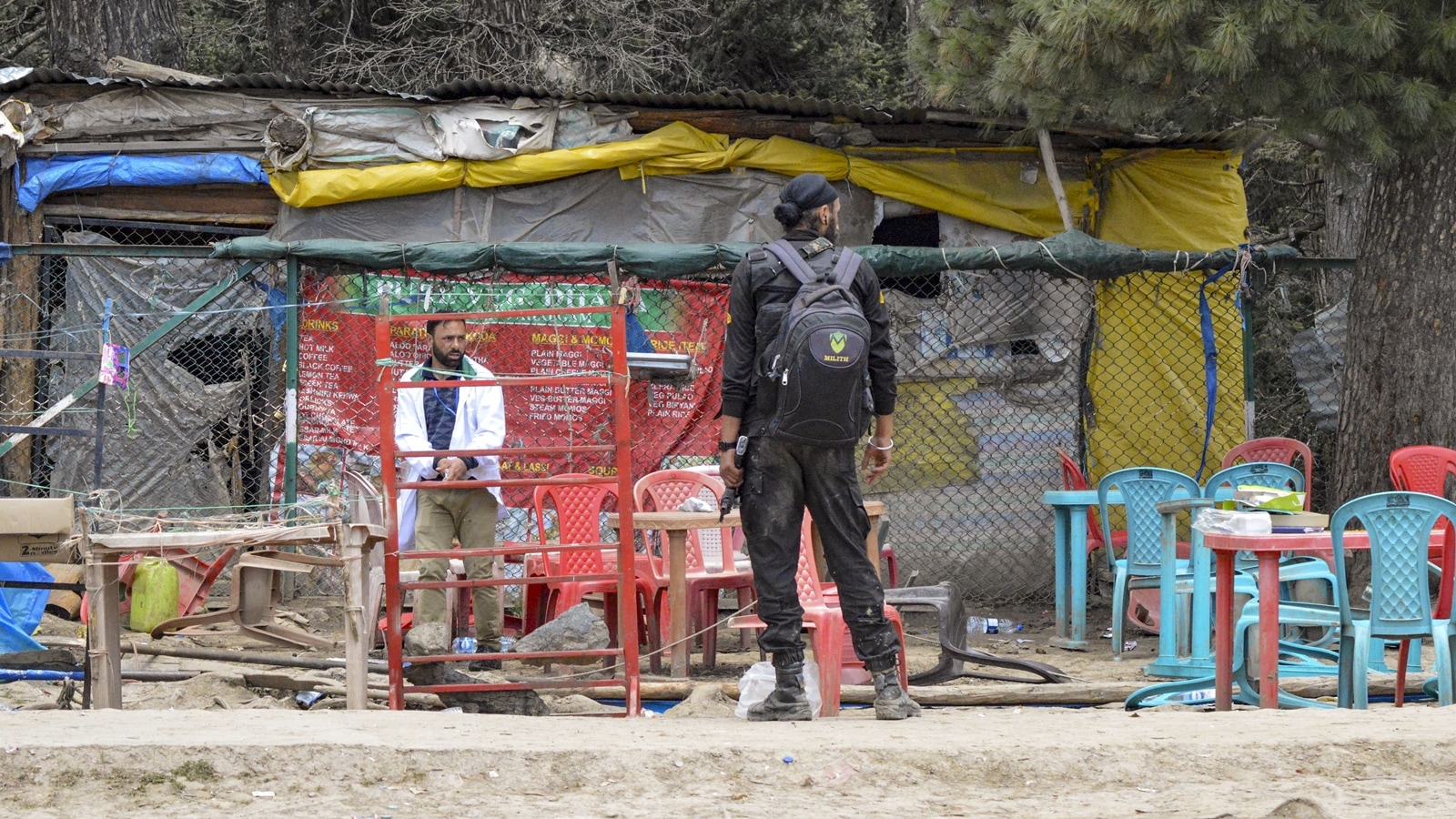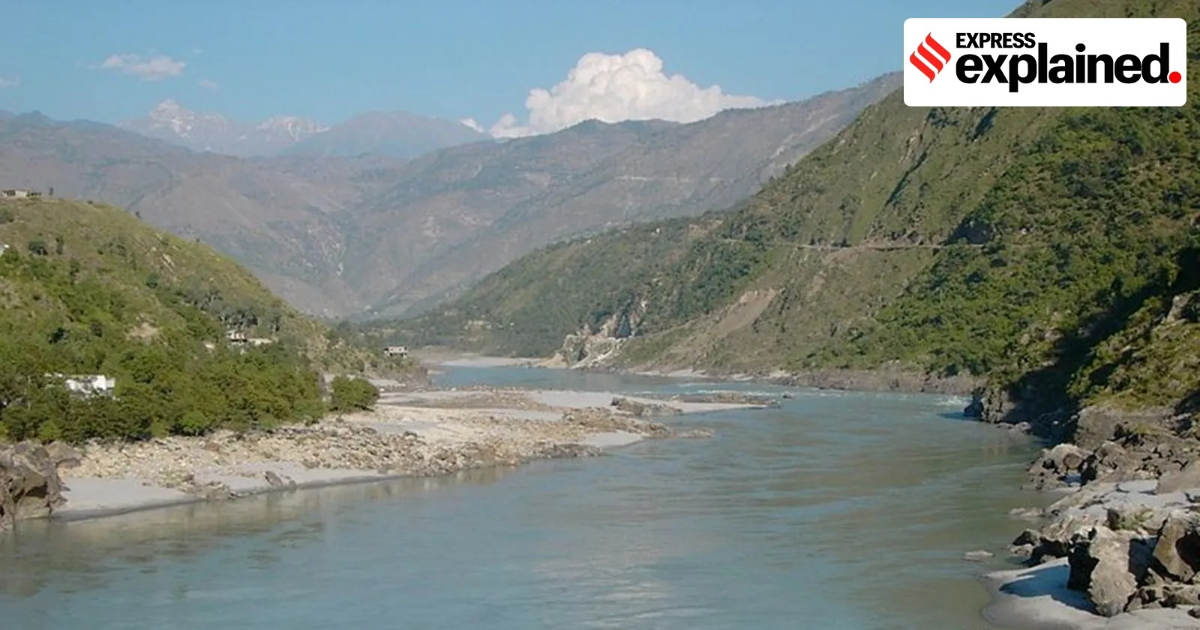What is the treaty, and what does this decision mean for both Pakistan and India?
Story continues below this ad
Q. What is the Indus Waters Treaty or IWT?
The IWT was signed by India and Pakistan on September 19, 1960, after nine years of negotiations to determine the distribution of the waters of the Indus and its tributaries. It was signed in Karachi by then Prime Minister Jawaharlal Nehru and then Pakistan President Ayub Khan, in an agreement arranged by the World Bank.
The treaty comprises 12 Articles and 8 Annexures (from A to H). Under the IWT, India enjoys “unrestricted use” of the three “Eastern Rivers” (Beas, Ravi, Sutlej), whereas Pakistan controls the three “Western Rivers” (Indus, Chenab, Jhelum). This, in effect, gives India roughly 30% and Pakistan 70% of the water carried by the Indus River System. According to Article III (1) of the Treaty, “India is under obligation to let flow” waters of the Western Rivers to Pakistan.
Q. Is this the first instance of the treaty being kept in abeyance?
The treaty has survived wars with Pakistan, and this is likely the first time that one of the two signatories has moved to suspend it. In fact, even in the aftermath of the Uri attack in 2016, which left 18 soldiers dead, there were demands for its revocation — but it didn’t happen.
Over the past two years, the IWT has again been at the centre of rising tensions, with India issuing a notice to Islamabad in January 2023 seeking the “modification” of the Indus Waters Treaty, followed by another formal notice in September seeking its “review and modification.” The word “review,” according to experts, effectively signalled New Delhi’s intent to revoke and renegotiate the treaty, which turns 65 this year.
Read | ‘It seemed like an eternity’: What happened when terror struck Pahalgam’s Baisaran valley
India wanted to renegotiate the treaty citing “fundamental and unforeseen changes in circumstances” that warrant a reassessment of its obligations under the Indus Waters Treaty. Key concerns included shifting demographics, environmental challenges, clean energy needs tied to emission goals, and ongoing cross-border terrorism. The demand for renegotiation also came amidst Pakistan objecting to the design features of two hydroelectric projects currently under construction in J&K — the Kishanganga HEP on the Kishanganga, a tributary of the Jhelum, and the Ratle HEP on the Chenab. Although they are “run-of-the-river” projects, which generate electricity without obstructing the natural flow of the river, Pakistan has repeatedly alleged that these violate the IWT.
Yet, even during this period of diplomatic strain, the treaty was never suspended — until now.

The Indus Waters Treaty lacks an exit clause, meaning neither India nor Pakistan can legally abrogate it unilaterally. The treaty has no end date, and any modification requires the consent of both parties. While the treaty cannot be exited, it does contain a dispute resolution mechanism: Article IX, along with Annexures F and G, lays out procedures for raising grievances—first before the Permanent Indus Commission, then a neutral expert, and eventually, a forum of arbitrators.
Pakistan’s official response to India’s suspension of the IWT is not known at the moment. However, in a 2016 interview with Dawn newspaper, former Pakistani federal law minister Ahmer Bilal Soofi said that arbitration may not offer much recourse if India chooses not to follow the treaty.
“In case India ‘revokes’ the treaty, it literally means it has shunned it. The dispute resolution mechanism under Article IX and Annexes F and G of the IWT will be of no use and assistance to Pakistan. It is limited to a dispute under the treaty and not meant to provide for specific performance of the treaty itself,” Soofi told the newspaper.
“Since there is no provision in the IWT about its duration or suspension, there is no avenue that Pakistan can approach for ‘revival’ of the treaty. Nor can Pakistan approach the International Court of Justice seeking specific performance to implement the treaty because of the Indian reservation given under the ICJ statute that bars the filing of a case by Pakistan against India. In other words, Pakistan will not be left with any peaceful mechanism for seeking performance of the treaty by India.”
 Security personnel near the site of the Pahalgam terror attack.Q. So what does the suspension of the IWT mean for India and Pakistan?
Security personnel near the site of the Pahalgam terror attack.Q. So what does the suspension of the IWT mean for India and Pakistan?
India’s decision to keep the IWT in abeyance gives New Delhi more options to use the waters of the Indus River system. Experts say India can now stop sharing water flow data with Pakistan under the treaty.
“The decision of keeping the IWT in abeyance gives several options to India. For instance, India can immediately stop sharing of water flow data with Pakistan. There will be no design or operational restrictions on India for use of water of Indus and its tributaries. Also, India can now create storage on Western Rivers—Indus, Jhelum and Chenab. India can also undertake reservoir flushing (a technique used to remove accumulated sediment from reservoirs by releasing water through low-level outlets to scour out the sediment and transport it downstream) on the Kishanganga project, which will increase life of the dam,” said P.K. Saxena, former Indian Commissioner for Indus Waters.
Saxena added that India can also stop visits by Pakistani officials to hydropower project sites on rivers covered under the IWT.
However, it is important to note that the suspension will not have an immediate impact for a few years, as India currently lacks the infrastructure to either stop the flow of water into Pakistan or divert it for its own use.
